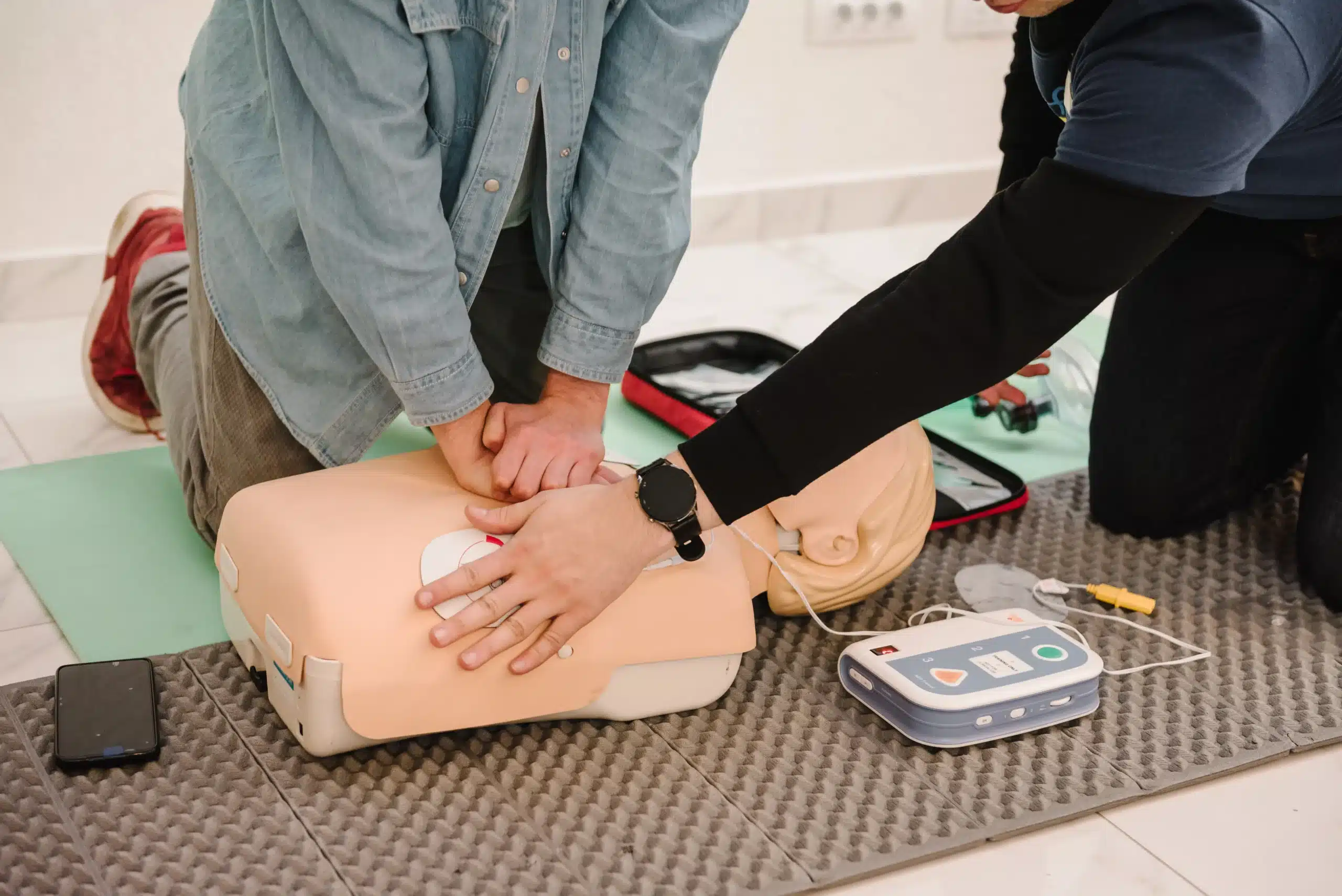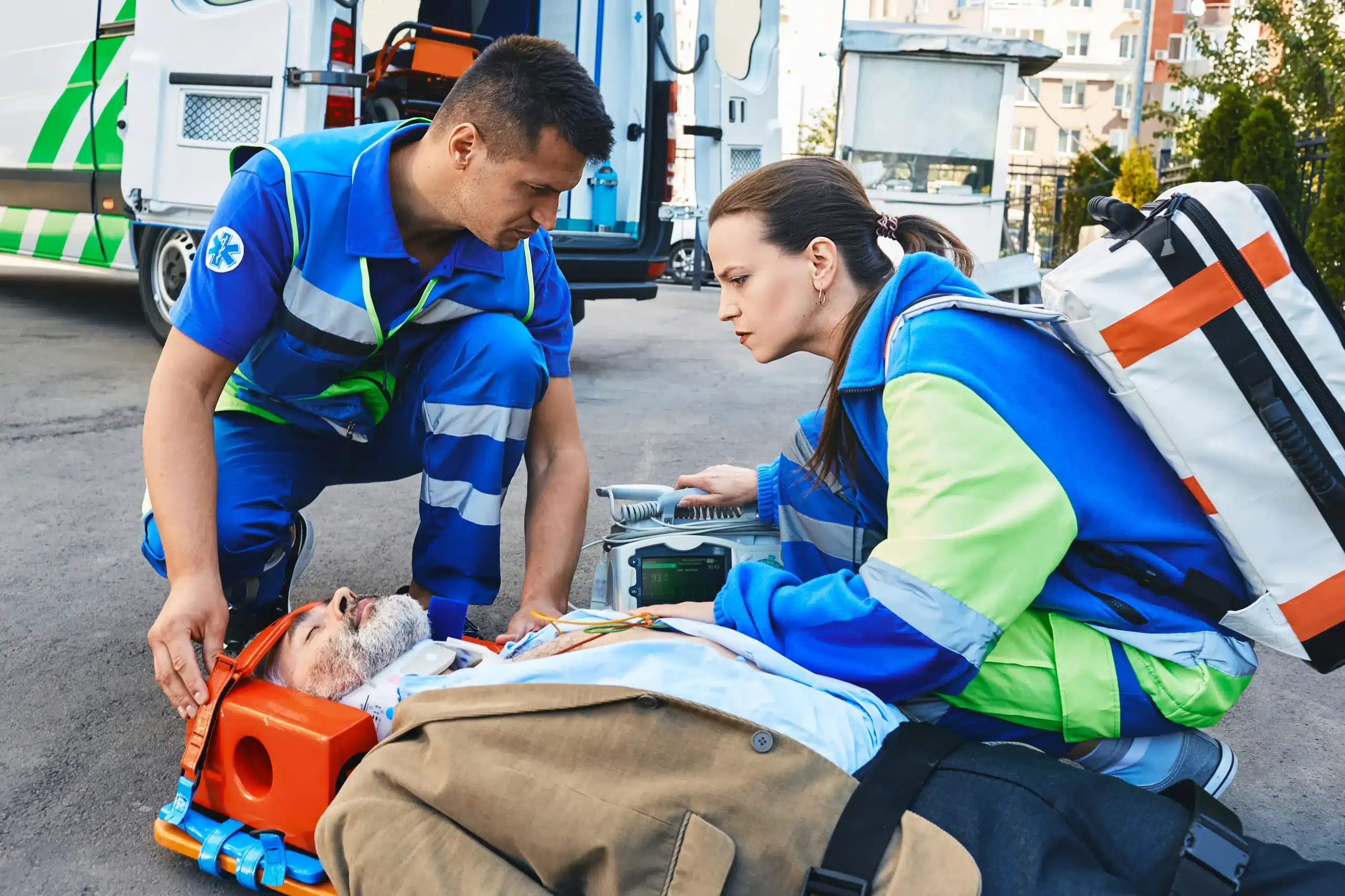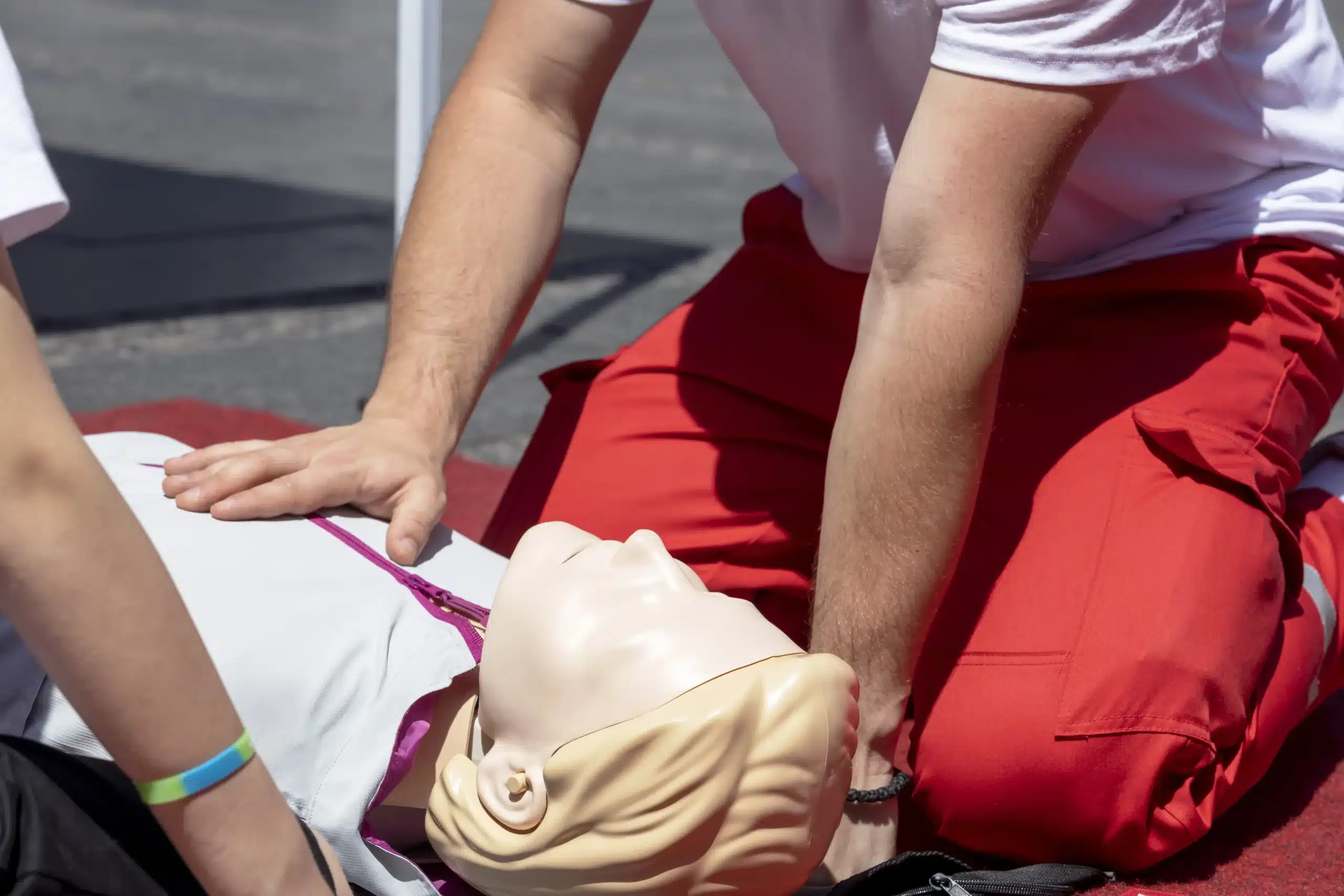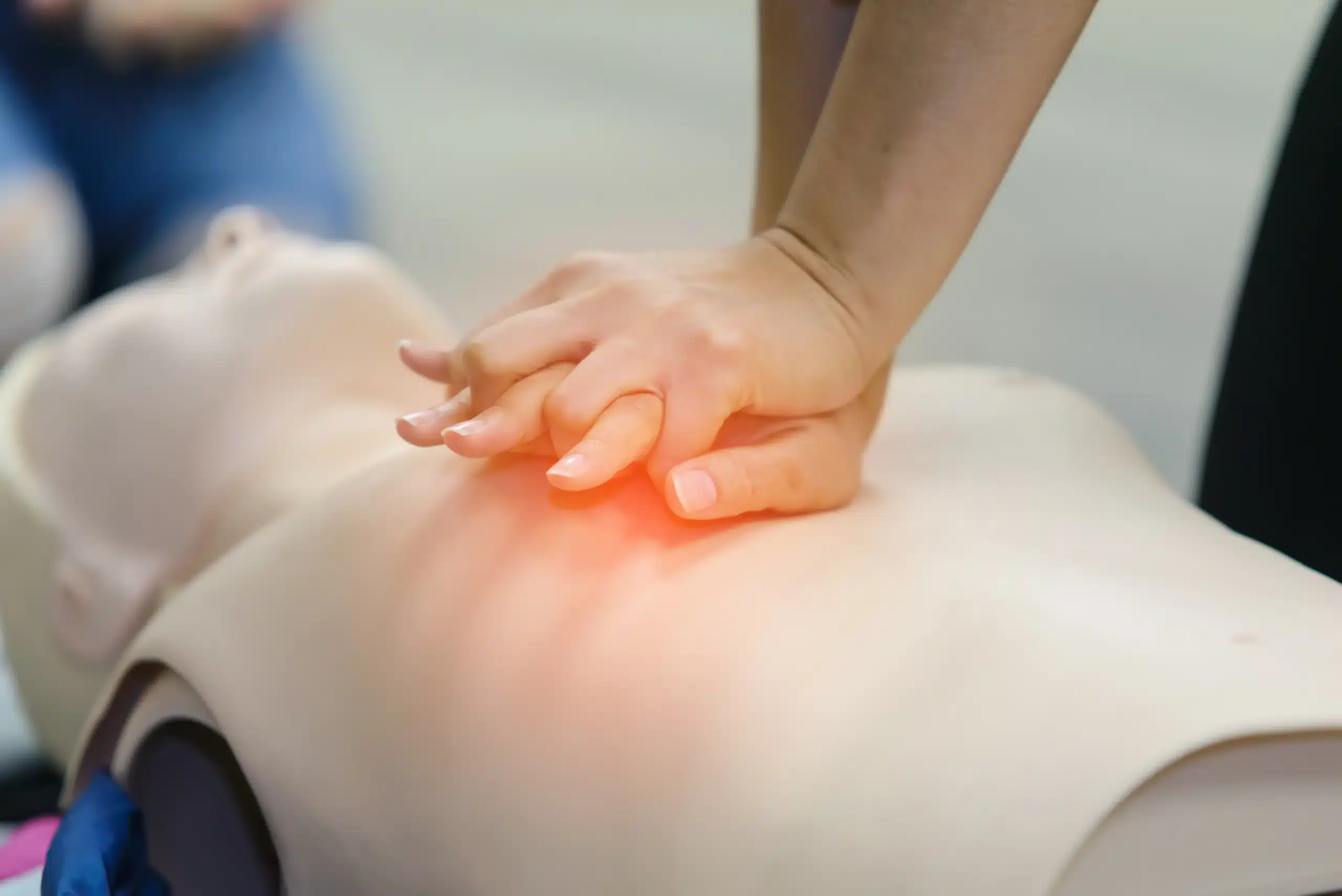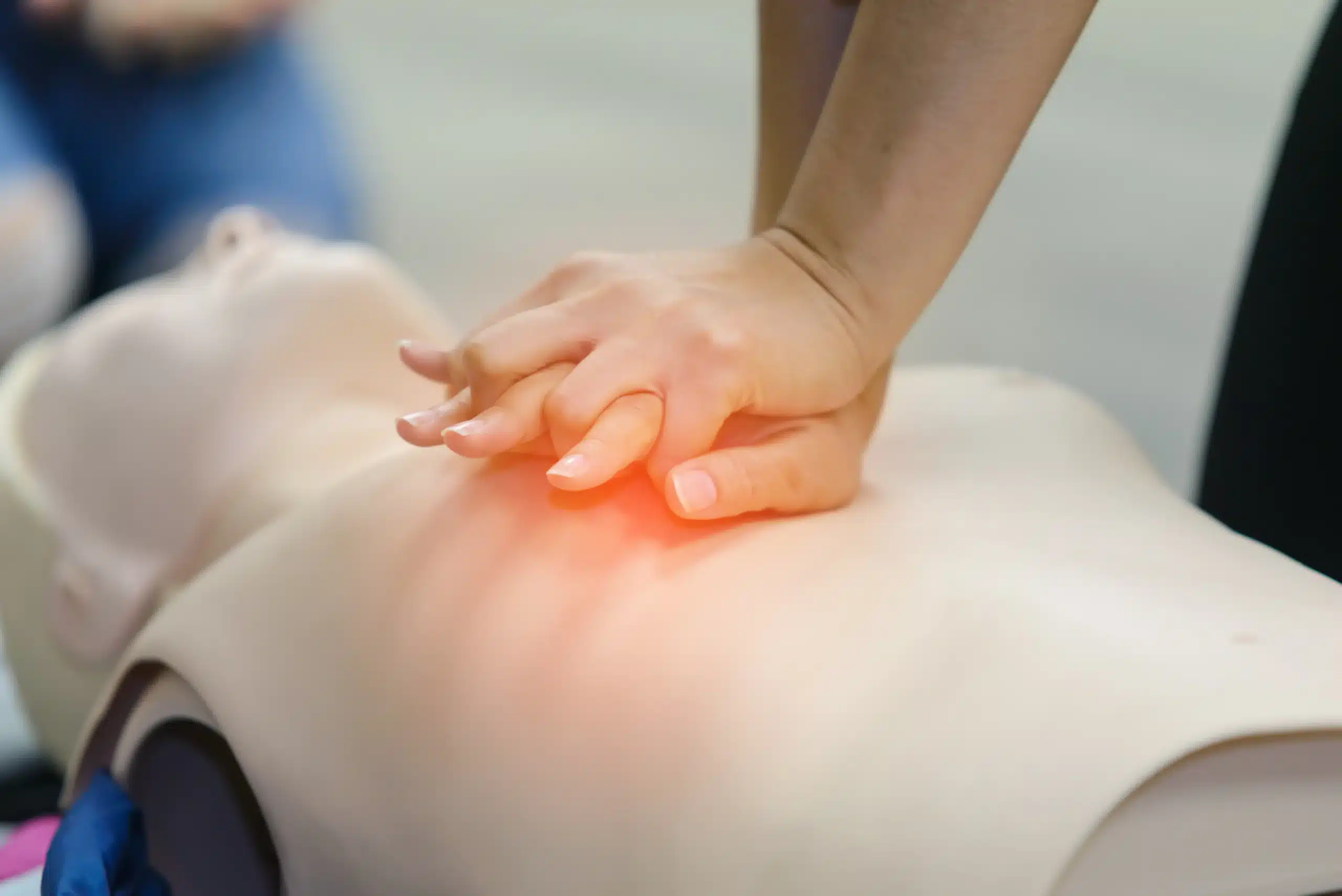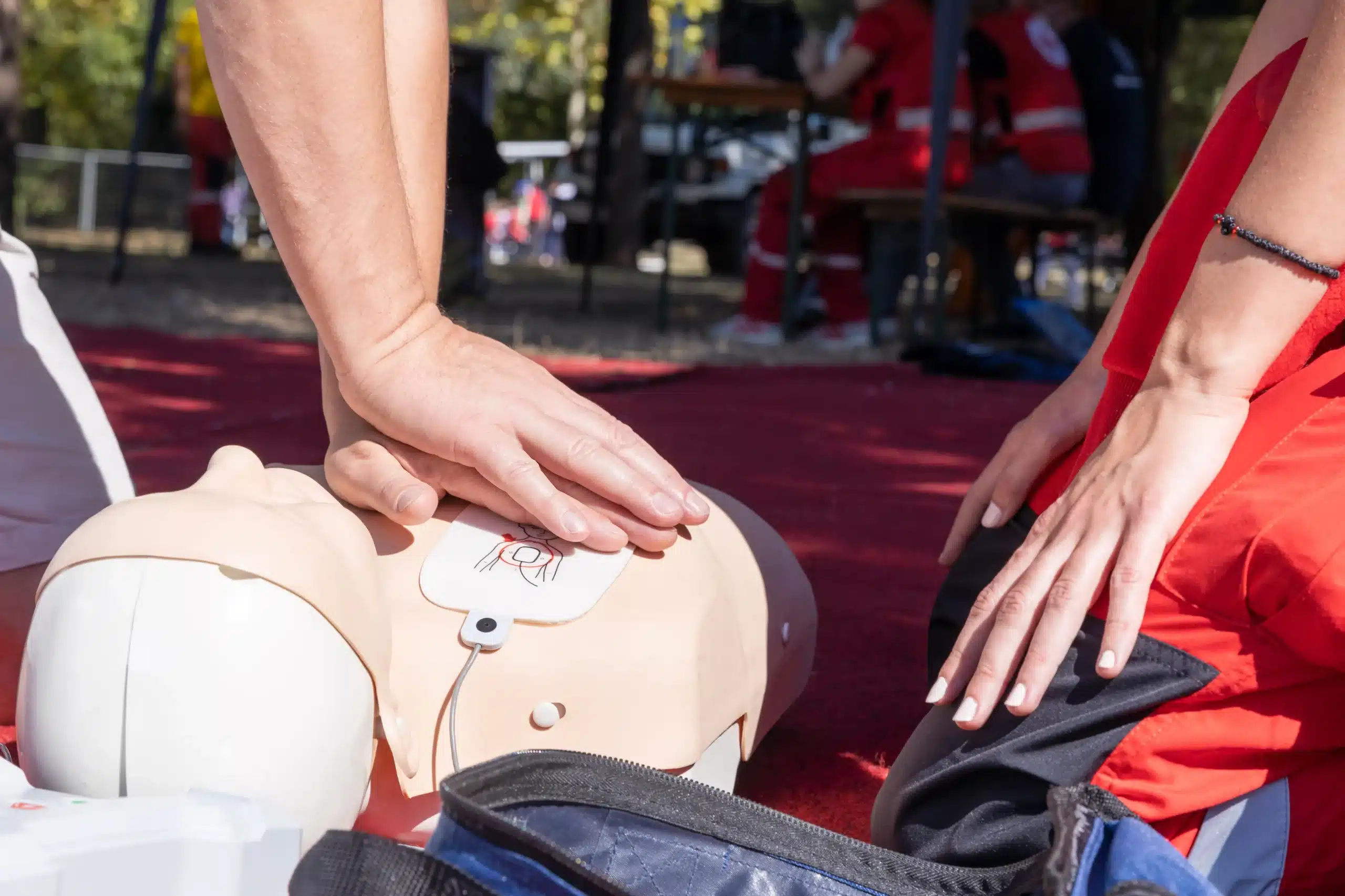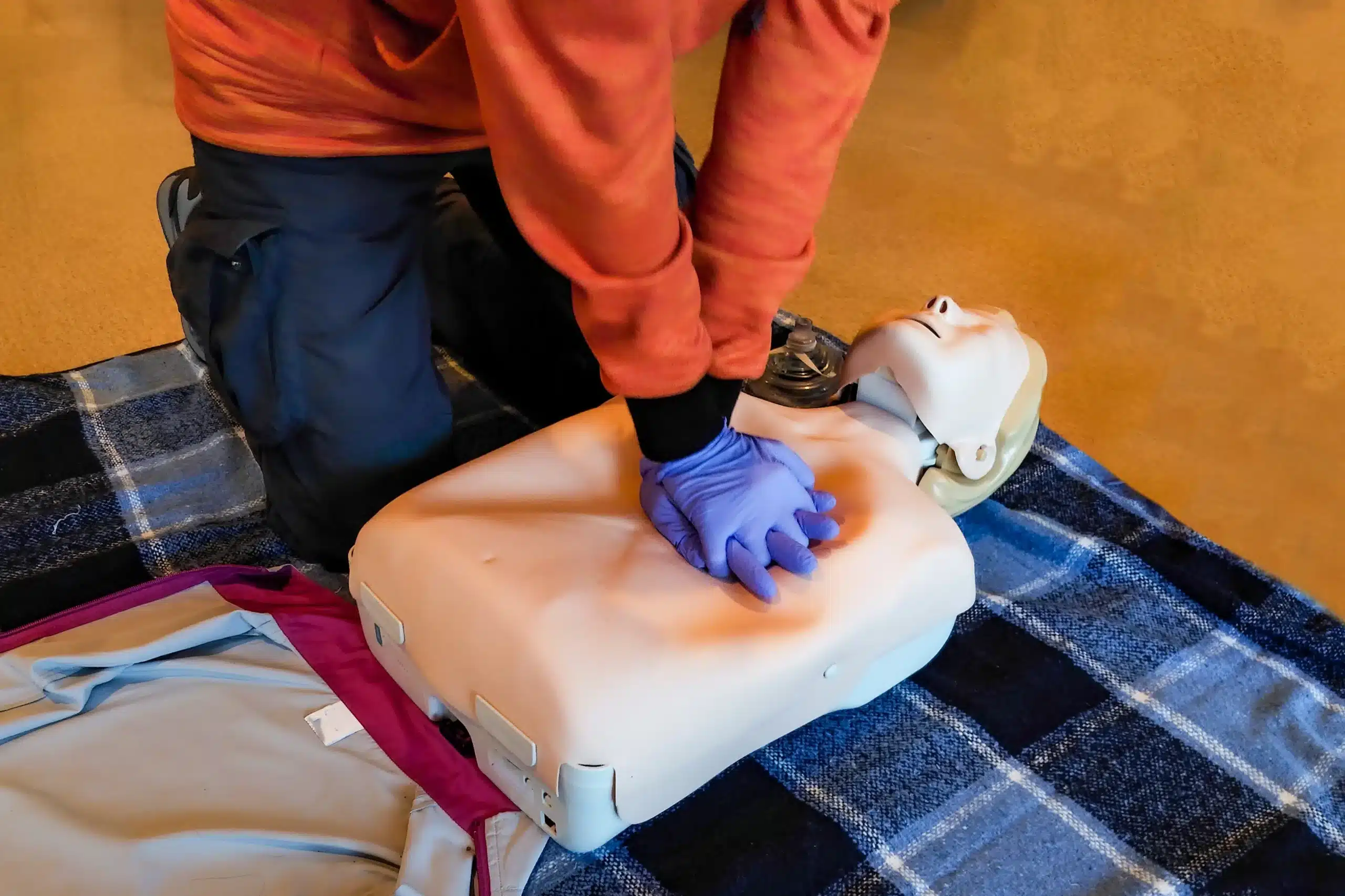Empowering yourself with life-saving skills is one of the most valuable things you can do. CPR courses in Palo Alto provide the training you need to respond effectively during medical emergencies, potentially making a life-saving difference in your community. This guide will explore the different types of CPR courses available in the Palo Alto area, including BLS, ACLS, PALS, and First Aid. We’ll also discuss the benefits of each course, who should consider taking them, and what to expect during the training process. Plus, we’ll provide tips on choosing the right CPR course and training provider for your individual needs.
Key Takeaways
- Choose the right CPR course for you: Whether you’re a healthcare provider, educator, or parent, Palo Alto offers CPR and first-aid courses tailored to various needs, from basic life support to advanced certifications like ACLS and PALS. Select a course that aligns with your specific goals.
- Hands-on training builds confidence: Effective CPR training emphasizes practical skills and real-time feedback. Seek providers using proven methodologies and advanced training technology, like the RQI program, to maximize your learning.
- CPR training fits your budget and schedule: With flexible scheduling options, group discounts, and competitive pricing, CPR certification is accessible and affordable. Find a reputable provider that offers convenient class times and cost-effective solutions.
What are CPR Courses in Palo Alto?
CPR courses in Palo Alto equip you with the skills to respond confidently during medical emergencies. Whether you’re a healthcare professional maintaining your certification or a concerned parent wanting to protect your family, there’s a course designed for you. These courses blend theory and hands-on practice, ensuring you’re prepared to act quickly and effectively.
CPR Course Types
Several types of CPR courses are available in Palo Alto, each tailored to different needs:
-
Basic Life Support (BLS): This course provides the foundational skills needed to perform CPR on adults, children, and infants. BLS certification is often a prerequisite for other healthcare certifications and is essential for healthcare providers, first responders, and anyone working in a healthcare setting. You’ll learn how to recognize the signs of a cardiac arrest, provide high-quality chest compressions, and deliver rescue breaths. Safety Training Seminars offers BLS certification through the American Heart Association.
-
Advanced Cardiovascular Life Support (ACLS): ACLS training builds upon the fundamentals of BLS and focuses on advanced life-saving techniques for adults experiencing cardiac arrest or other cardiovascular emergencies. This course is designed for healthcare professionals, including physicians, nurses, paramedics, and respiratory therapists, who manage cardiovascular emergencies. For more information on ACLS, visit the American Heart Association website.
-
Pediatric Advanced Life Support (PALS): PALS focuses on the specialized skills needed to respond to life-threatening emergencies in infants and children. It covers pediatric assessment, airway management, and effective resuscitation techniques. The American Heart Association provides comprehensive PALS resources.
-
General CPR and First Aid: These courses combine CPR training with essential first aid skills, empowering you to handle a wide range of medical situations. They are ideal for anyone who wants to be prepared for everyday emergencies, from minor injuries to life-threatening events. These courses are beneficial for teachers, coaches, childcare providers, parents, and anyone interested in gaining practical life-saving skills. Learn more about our CPR and First Aid courses.
Who Should Take Each Course?
Choosing the right CPR course depends on your individual needs and professional requirements:
-
BLS: Essential for healthcare providers, first responders, and anyone working in a healthcare environment.
-
ACLS: Designed for healthcare professionals who manage cardiovascular emergencies, such as physicians, nurses, and paramedics.
-
PALS: Crucial for healthcare providers who work with infants and children, including pediatricians, nurses, and emergency medical technicians.
-
General CPR and First Aid: A valuable asset for anyone who wants to be prepared for everyday emergencies, including parents, teachers, coaches, and community members. Consider this course if you want to gain confidence in your ability to respond to both minor injuries and life-threatening situations.
Best CPR Training in Palo Alto
Finding the right CPR training can feel overwhelming, but several excellent providers serve Palo Alto, Redwood City, and Menlo Park. Here’s a closer look at some top options:
Safety Training Seminars
Safety Training Seminars offers a comprehensive range of courses, including BLS, ACLS, PALS, and First Aid. All courses lead to American Heart Association (AHA) certification, the gold standard in CPR training. Their use of the RQI program means you can learn essential skills efficiently through a blended online and in-person approach. Safety Training Seminars also offers a low price guarantee and flexible scheduling with daily classes, making it easier to fit training into your busy life. For larger groups, explore their group discounts to make training even more accessible.
Other Reputable Providers
Beyond Safety Training Seminars, several other reputable organizations offer CPR training in the area. Bay Area CPR provides various AHA-certified courses, including BLS, ACLS, PALS, and First Aid, plus specialized training like NRP and EMSA Pediatric CPR. Stanford Health Care is another excellent option, especially for healthcare professionals seeking certifications like BLS, ACLS, and PALS. The City of Palo Alto Fire Department also offers CPR classes as part of their community programs. You can also find many other AHA-certified training centers throughout the area.
What Happens in a CPR Course?
CPR courses equip you with the skills to respond to medical emergencies, potentially saving lives in your community. At Safety Training Seminars, we offer daily CPR classes in Palo Alto, running from 8 am to 10 pm, making it easy to fit training into your schedule. We also offer group discounts to make training more accessible.
Course Structure and Duration
Our CPR courses blend theory and practical application. You’ll learn the science behind CPR and then practice those skills in a controlled environment. Course duration varies depending on the type of certification you’re pursuing—BLS, ACLS, or PALS—but you can generally expect a comprehensive learning experience within a single day.
Essential CPR Skills
CPR courses cover a range of essential skills, including:
- Chest compressions: You’ll learn the proper technique for performing chest compressions, a critical component of CPR that helps circulate blood to vital organs.
- Rescue breathing: This technique involves providing breaths to a person who isn’t breathing or isn’t breathing adequately.
- AED use: Automated External Defibrillators (AEDs) can significantly increase the chances of survival during cardiac arrest. You’ll learn how to operate an AED safely and effectively.
- Emergency recognition: Recognizing the signs of a medical emergency is the first step in providing effective assistance. We’ll teach you how to identify different emergencies and respond appropriately.
- Basic first aid techniques: In addition to CPR, you’ll learn basic first aid skills to manage common injuries like cuts, burns, and sprains.
Hands-on Training
We believe hands-on training is crucial for mastering CPR. Our courses provide ample opportunities to practice your skills on mannequins, giving you the confidence to apply them in a real-life emergency. This interactive approach ensures you’re fully prepared to act quickly and decisively when needed.
Certification Process and Validity
Upon successful completion of the course, you’ll receive an American Heart Association CPR certification, typically valid for two years. To maintain your certification, you’ll need to take a refresher course before it expires. This ensures your skills remain sharp and up-to-date. We offer convenient renewal options through our RQI program. Our low price guarantee ensures you’re getting the best value for your training.
Advanced Training Technology
We utilize advanced training technology, including feedback devices on our mannequins, to enhance the learning process. These devices provide real-time feedback on the depth and rate of your compressions, helping you refine your technique and improve the overall quality of your CPR. This focus on quality and our commitment to accessible pricing makes Safety Training Seminars the ideal choice for your CPR training needs.
CPR Training Costs in Palo Alto
CPR certification courses in Palo Alto come at different price points depending on the provider and the type of course. Basic CPR classes typically range from $50 to $150, while more specialized certifications like ACLS (Advanced Cardiovascular Life Support) can run upwards of $200. It’s helpful to research various options to find a course that fits your budget and needs.
Average Course Prices
Basic CPR and First Aid training usually falls on the lower end of the price spectrum. Expect to pay somewhere between $75 and $125 for these foundational courses. More advanced training like ACLS and PALS naturally comes with a higher price tag, often between $150 and $250, reflecting the specialized knowledge and skills required. Remember to check with specific providers, like Safety Training Seminars, for their most up-to-date pricing.
Factors Affecting Costs
Several factors influence CPR course pricing. The course content itself plays a big role—more comprehensive courses covering a wider range of skills will generally cost more. The type of certification you receive also matters. For example, American Heart Association certifications might have different pricing than other certifying bodies. Finally, the length of the course can affect the cost, with longer courses generally being more expensive. The training provider’s reputation and experience also contribute to the overall cost, as established providers with experienced instructors may charge more.
Group Discounts and Special Offers
If you’re training a group, inquire about discounts. Many CPR training providers, including Safety Training Seminars, offer reduced rates for groups, making it a more economical option for workplaces, community organizations, or even groups of friends. Group discounts can significantly lower the per-person cost, making CPR training more accessible. This can be a great way to make training more affordable while ensuring everyone receives the same high-quality instruction.
Low Price Guarantees
Some CPR training organizations offer a low-price guarantee. Safety Training Seminars, for example, is committed to providing affordable, high-quality training. A low-price guarantee can give you confidence that you’re getting a good deal on essential, life-saving skills. It’s always a smart idea to compare prices and look for providers who are transparent about their pricing structure.
Get Ready for Your CPR Course
So, you’re ready to learn CPR? Great! Knowing CPR can empower you to help in a crisis. This section covers what to expect and how to prepare for your CPR class.
Physical Requirements
CPR involves performing chest compressions and other physical maneuvers. While you don’t need to be an athlete, a reasonable level of physical fitness is helpful. If you have any physical limitations, it’s a good idea to chat with your chosen training center—like Safety Training Seminars—beforehand. They can offer guidance and may have modifications to help you succeed. Don’t worry about needing to reschedule; training centers understand that things come up, and they’ll work with you.
Age Restrictions and Prerequisites
There aren’t strict age restrictions for learning CPR. Even young children can learn modified techniques. The most important prerequisite? A willingness to learn and help! Many people have misconceptions about CPR. If you’re ready to learn, you’re ready to take a CPR course.
Recommended Pre-Course Materials
Some CPR courses, especially those using the RQI program, incorporate online learning. This often involves completing modules before your in-person skills session. For example, a BLS course might require 1–2 hours of online work, while ACLS or PALS could take 3–4 hours. Check with your specific provider for details. Completing the online portion beforehand lets you focus on the hands-on skills practice during your in-person class.
Online Learning Options
Speaking of online learning, the RQI (Resuscitation Quality Improvement) program is a popular choice. It combines online learning with a shorter, more focused in-person skills evaluation. This blended approach offers flexibility and convenience, especially for busy schedules. You can find out more about the RQI program offered by Safety Training Seminars.
Flexible Scheduling
Finding a class time that works for you shouldn’t be a hurdle. Many providers, including Safety Training Seminars, offer daily classes and various scheduling options. This makes it easier to fit CPR training into your life, whether you’re a busy professional, student, or parent.
Choose the Right CPR Course
Finding the right CPR course is like finding the right pair of shoes—it needs to fit your needs. Whether you’re a healthcare professional, a concerned parent, or simply someone who wants to be prepared for emergencies, understanding your goals is the first step. Ask yourself: Why do I want to learn CPR? Do I need it for my job, or do I want the skills for personal use? Knowing the answer will guide you toward the right course. As CPR123, Inc. points out, “CPR is an incredibly important skill to know; the best part is that nearly everyone can learn it.” So, take the leap and find a course that empowers you. Learn more about CPR training.
Assess Your Needs and Goals
Think about your specific requirements. Do you need basic CPR and First Aid certification or a more advanced qualification like ACLS or PALS? If you work in healthcare, your employer likely has specific requirements. If you’re learning CPR for personal knowledge, a general CPR and First Aid course might be perfect. Consider your schedule, too. How much time can you commit to training?
Compare Course Offerings
Once you know what you’re looking for, compare courses. Look at what different providers offer. Safety Training Seminars offers a wide range of CPR and first aid classes in Palo Alto, convenient for residents of Palo Alto, Redwood City, and Menlo Park. “Palo Alto CPR classes provide the training you need to respond to medical crises, potentially saving lives in your community,” so finding a local option can make a real difference. Check course content, schedules, and formats (online, in-person, or blended learning).
Evaluate Training Providers
Not all CPR training is created equal. Look for providers who offer American Heart Association certification, like the courses offered through Safety Training Seminars’ RQI program. A reputable provider will adhere to established guidelines and use quality training materials, ensuring you receive consistent, high-quality instruction. Quality control in CPR training is essential for producing skilled and confident responders. Learn more about quality control.
Common CPR Training Misconceptions
Don’t let myths about CPR hold you back. One common misconception is that CPR alone can restart a heart. The truth is that CPR primarily keeps blood and oxygen flowing to vital organs until professional help arrives. Understanding these misconceptions can empower you to act confidently in an emergency. Debunking these myths is crucial for encouraging more people to learn and perform CPR effectively.
Make an Informed Decision
Take your time and research different options. Read reviews, compare prices (Safety Training Seminars offers a low price guarantee), and consider what’s most important to you. Whether you’re looking for group discounts or a specific class format, choosing the right CPR course is an investment in yourself and your community.
Related Articles
- CPR Training in Menlo Park: Your Complete Guide – Palo Alto CPR Classes
- BLS Certification in Palo Alto: A Comprehensive Guide
- ACLS Courses in Palo Alto: Complete Guide
- Pediatric Advanced Life Support (PALS) in Menlo Park – Palo Alto CPR Classes
- First-Aid Training in Redwood City: A Complete Guide – Palo Alto CPR Classes
Frequently Asked Questions
What’s the difference between BLS and ACLS?
BLS focuses on the fundamentals of CPR and is suitable for anyone, while ACLS builds upon those basics with advanced techniques for healthcare professionals managing cardiovascular emergencies. Think of BLS as the foundation and ACLS as the specialized structure built on top.
How long does CPR certification last, and how do I renew it?
CPR certification is typically valid for two years. Renewal involves taking a refresher course before your current certification expires. Look into programs like RQI, which offer a blended learning approach for convenient renewal.
Do I need to be a healthcare professional to learn CPR?
Absolutely not! CPR training is valuable for everyone, from healthcare providers to parents, teachers, and anyone who wants to be prepared for emergencies. There are courses designed for all skill levels and backgrounds.
What if I have physical limitations? Can I still take a CPR course?
Definitely! Talk to your chosen training center about any physical limitations you may have. They can offer guidance and modifications to help you successfully complete the course.
How do I choose the right CPR course for me?
Consider your individual needs and goals. Are you a healthcare professional needing certification for your job, or are you learning CPR for personal preparedness? Think about your schedule and the type of learning environment you prefer (online, in-person, or blended). Once you have a clearer picture of your needs, compare course offerings from different providers to find the best fit.
